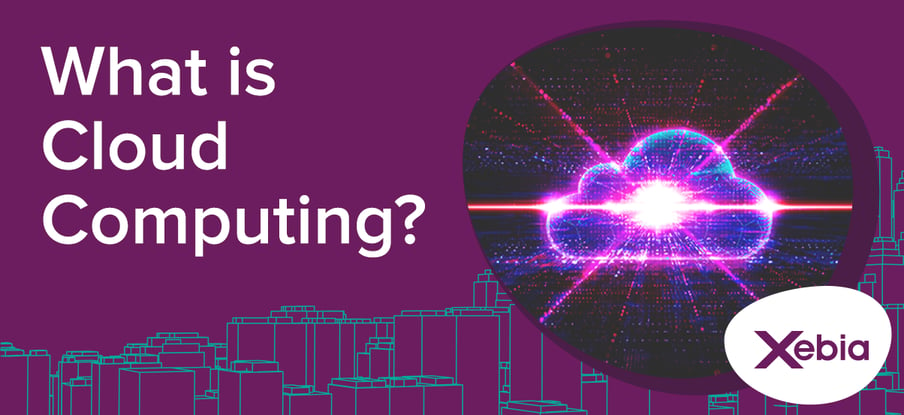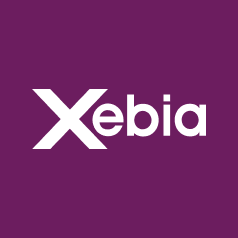From the perspective of business utility, Cloud Computing is one of the most important technological developments of the last decades. If you’re not a total newcomer to the IT world, you’ve certainly heard about this technology.
But if you don’t understand all the ins and outs of Cloud Computing – like, for example, the difference between IaaS and PaaS – don’t worry. In this article, we’ll take you on a journey through Cloud’s basics, benefits, and more. Examples included.
So, let’s jump right in!

What Is Cloud Computing and How Does It Work?
Simply put, Cloud Computing means storing and accessing data and programs on the internet instead of on computer hard drives. The latter is also more technically referred to as storing information on-premise.
From a business perspective, Cloud Computing is the delivery of on-demand services – like applications, storage, or even processing power – over the internet and on a pay-as-you-go basis.
Technically, Cloud Computing is a puzzle with three basic pieces:
- Cloud service providers store information and apps at physical locations (data centres).
- Users access this data and services.
- The internet serves as an instant gateway between the providers and users, regardless of the distance.
Although this sounds very simple, it’s empowered by complex technology. Do you remember how things had to be run back in the ’90? A lot of data drives, huge on-site data centres that required regular updates and upgrades. (Not even to mention that everything was prone to crash at some point).
So, overall, Cloud Computing is a convenient way to access information online instead of having to build, manage, and maintain them on your local hard drive or server. Thus, it’s efficient, fast, and, most importantly, secure.
Examples of Cloud Computing
Cloud services can come in many different forms. Some of them you will encounter daily, even in your private use, while others are tailored to specific industry needs.
Importantly, there are many industries that can take advantage of Cloud solutions. Prominent examples are banking and finance, Government operations, education, and even healthcare.
Let’s look at a few of the most popular examples:
- Google Services. This includes Google Drive for online data storage, Google’s office suite, and even many, many more other Google services (like Google Maps). All these applications run in the Cloud and are accessed through the internet. Google’s productivity software is online-first; your work is stored on Google Drive, in the Cloud. As a result, you can access your data from nearly any computer or mobile device around the globe (unless it isn’t blocked due to political reasons, which seems to be a horrifyingly rising thread of late).
- Microsoft Teams. Instant communication between people through different devices is also a form of Cloud Computing. Other than Microsoft Teams, this also includes examples like Slack or the open-source Mattermost from GitLab.
- Business processes. Right from the top, even business email systems are Cloud-based. Another important batch includes business software, like WebEx, Cisco, Salesforce or HubSpot – not even to mention CRM systems.
- Datadog. Companies that rely on big data need massive storage and processing power to perform analyses, and this usually includes utilizing Cloud Computing. As a result, companies can also take advantage of other Cloud-related solutions, scalable Cloud monitoring platforms (for example, Datadog). With them, enterprises can take deeper dive into their products and technology (with hundreds of built-in integrations and dashboards) to better understand what’s helping them grow and what can be optimized.
Advantages of Cloud Computing. What Are the Benefits?
Cloud Computing’s popularity doesn’t come from nowhere. The Cloud can deliver multiple business benefits to almost any enterprise.
The main advantages are:
- Flexibility. Cloud Computing enables to work safely from many places across the globe thanks to a seamless information flow across locations and devices.
- Convenience. As a result, storing, sharing, and retrieving data is also fast and easy.
- Reliability. Providers of Cloud services continually refine their architecture to deliver the best standards of availability and performance. At the same time, third parties that host their service maintain and update them, providing access to good customer support. As a result, this creates a certain standard of excellence.
- Cost. Cloud Computing may sound like an expensive affair, however, there’s an important factor that makes it affordable – the idea of multitenancy. Since a Cloud provider offers their clients the same computing power, the idea is sometimes compared to sharing an apartment building. One person usually can’t afford the whole block, but one apartment is usually all they need. And that makes it a hundred or more times cheaper than renting the entire building. Similarly, a part of computing power will usually suffice – and it will be affordable.
- Scalability. With Cloud Computing, you’re able to freely choose how much computing power you need. Generally, Cloud vendors allow customers to increase or decrease the computing resources as needed.
Cloud Computing Security
Intuitively, Cloud Computing may sound like a security threat. Crucial information stored on the web…? However, safety is also among one of the most important Cloud benefits. Cloud vendors invest in security, regularly updating protocols that keep cyber threats away.
Salesforce provides an example of a bank. Your money is safer in a bank account than in a cookie jar in your kitchen. Similarly, data is safer with a Cloud service provider than on an unsecured work network.
This increased security stems from the scale. Cloud vendors, like Google Cloud, AWS or Microsoft Azure employ many security experts who make sure the vendor’s services are safe. After all, providing reliable services is the fundament of the vendor's business, so they can’t afford mistakes. Otherwise, they can be out of business.
This landscape also frees organizations from having to find and keep cybersecurity talent.
Learn more about Cloud Security
Types of Cloud Computing
Now, returning to the enigmatic aberrations like PaaS – Cloud Computing can be offered in a few different models.
These models usually include the following:
IaaS
Infrastructure-as-a-Service means that suppliers, such as AWS, provide a virtual server instance and storage, as well as APIs that let users migrate workloads to a virtual machine. Users get an allocated storage capacity. They can start, access, configure, and stop the virtual machine storage as desired.
Infrastructure-as-a-Service is closest to a remote data centre for business users.
PaaS
The Platform-as-a-Service model means that Cloud providers host development tools on their infrastructures – and through APIs, gateway software, or web portals, users can access these tools.
Well-known Platform-as-a-Service products are, for example, Google App Engine, AWS Elastic Beanstalk, or Salesforce’s Lightning Platform.
SaaS
Definitely the most popular model, Software-as-a-Service is a model where the service provider delivers a web service. Or, in other words, an application.
SaaS includes, for example, the mentioned productivity software (Microsoft 365), or business email services (Outlook).
Cloud Infrastructure Types
There are also several types of Cloud Computing options.
Public Cloud
The classic Cloud Computing model. With the public cloud, users can access a large pool of computing power over the internet regardless of the model (IaaS, PaaS, or SaaS).
Crucially, with the public cloud, users can rapidly scale services.
As we’ve mentioned in the multitenant example, users can declare how much computing power they need. That’s why the public cloud is often used for less-sensitive applications that demand a varying amount of resources.
Private Cloud
As the name suggests, the private cloud is tucked away behind the corporate firewall. It allows benefiting from certain advantages of the public cloud. At the same time remains under the control of the enterprise that’s using it.
Most importantly, with the public cloud, companies can decide exactly where their data is stored. They can also develop the infrastructure the way they want (largely for IaaS and PaaS projects). That way, they can provide their developers with access to computing power that scales on-demand without having security at risk.
The downside is, however, the economy of scale. Only a few enterprises will have the grand potential of AWS, Microsoft, or Google. Yet, the private cloud can be a good steppingstone before shifting some applications into the public cloud.
Hybrid Cloud
Funnily, usually, companies fall into another category – the hybrid cloud. In other words, a bit of this, a bit of that. Citing ZDNet, some data in the public cloud, some projects in a private cloud, multiple vendors and different levels of cloud usage.
What Is the Future of Cloud Computing?
Although Cloud Computing has developed into a crucial pillar in IT operations, experts indicate that it still has a long way to go. The further expansion of this technology will likely include a rise in processing capability, empowered by quantum computing and AI, as well as other new technologies to increase cloud adoption.
According to Salesforce, the most likely developments in Cloud Computing soon will include a rise in hybrid clouds, more multi-cloud strategies, an increasing number of low-code and no-code platforms, and more.
We hope this article has helped you to grasp the Cloud Computing landscape of today. If you have any questions, don’t hesitate to contact us directly through our contact page or on LinkedIn. Good luck in your Cloud endeavours!





